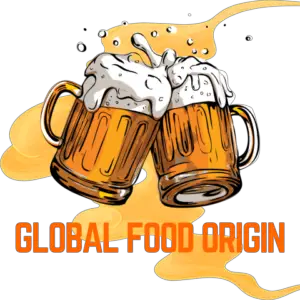Chicken Tikka Masala is a beloved dish featuring marinated and grilled chunks of chicken enveloped in a creamy, spiced tomato sauce. Its disputed origin story is a tapestry weaving together Scottish and Indian threads.
Some assert it sprung up in a Glasgow restaurant, while others trace its roots to traditional Indian cooking techniques.
Over time, the dish has evolved, incorporating various regional spices and ingredients, which has only enhanced its global appeal.
Today, Chicken Tikka Masala enjoys immense popularity, often adapted to suit local tastes with recipe variations including different levels of creaminess, spice blends, and protein choices beyond chicken.
Quick Overview: Chicken Tikka Masala Origin
Disputed Origins: The origins of Chicken Tikka Masala are debated, with some claiming it was created in Glasgow, Scotland, by Ali Ahmed Aslam, the owner of the Shish Mahal restaurant in the 1970s, while others believe it has roots in South Asian cuisine, adapted for Western tastes.
Cultural Impact: Chicken Tikka Masala has had a significant cultural impact, reflecting the blending of Scottish and Indian culinary traditions. It has been embraced as a symbol of multicultural Britain and is popular worldwide.
Evolution of the Dish: The dish has evolved over time, with variations in spices and ingredients reflecting regional preferences. This includes adaptations like shahi chicken masala in India and the various versions served in the UK and other countries.
Ingredients and Preparation: The dish typically consists of marinated and grilled chicken chunks in a creamy, spiced tomato sauce. Key spices include cumin, coriander, and garam masala, with regional variations adding ingredients like coconut, almond, honey, or cream.
Cooking Techniques: Traditional Indian cooking techniques, such as using a tandoor oven for grilling the chicken, are central to the dish. However, modern adaptations and innovations in cooking methods have also influenced its preparation.
Cultural Significance: Chicken Tikka Masala is more than a dish; it’s a celebration of cultural fusion and is featured in various cultural events and festivals, symbolizing the integration of South Asian communities into British society.
Global Influence: The dish is a staple of fusion cuisine and has gained popularity across the globe, with chefs incorporating local flavors and ingredients into their versions of the dish.
Controversies and Debates: There are ongoing debates about the authenticity of Chicken Tikka Masala and discussions on cultural appropriation, highlighting the complexities of cultural exchange through food. Efforts to secure a protected designation of origin for the dish in the UK were unsuccessful.
Culinary Fusion and Evolution: Chicken Tikka Masala is a testament to culinary fusion and the ongoing evolution of food traditions, with its story continuing to influence modern cuisine and dining experiences.
Origin of Chicken Tikka Masala
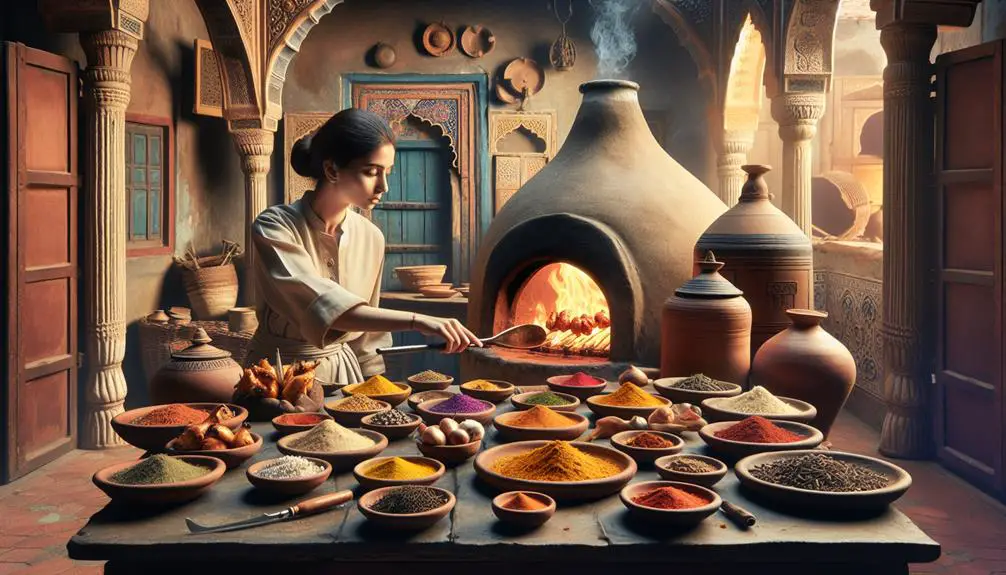
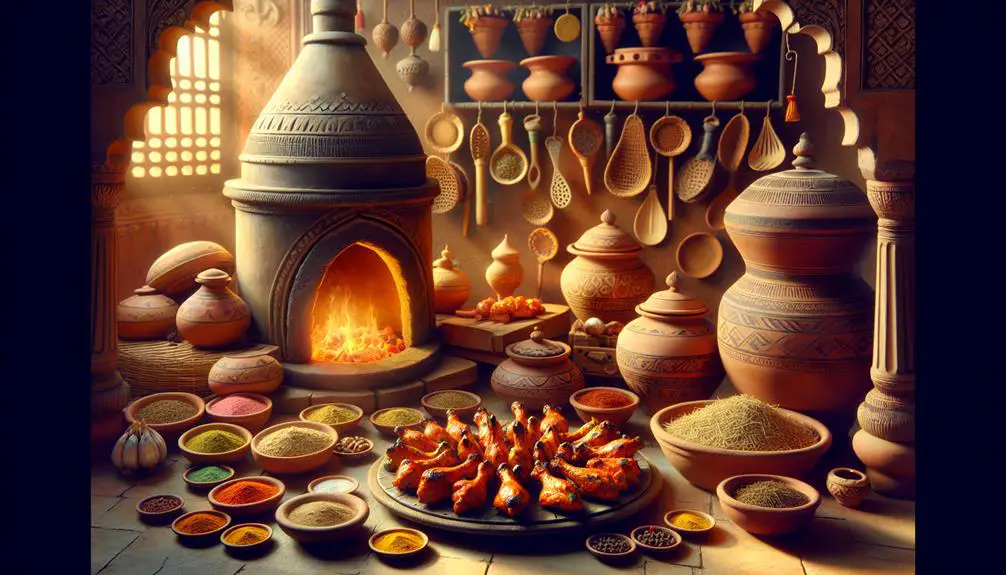
Exploring the history of chicken tikka masala reveals a dish surrounded by debate and rich with cultural impact across different continents.
The beginnings of chicken tikka masala are widely argued. Some believe it started in Britain by a man named Ali Ahmed Aslam, who owned the Shish Mahal restaurant in Glasgow.
According to this story, he made the dish in the 1970s after a customer said his chicken tikka was too dry. Aslam is said to have quickly made a creamy tomato sauce to add to the dish, creating what we now know as chicken tikka masala.
Yet, Indian food critic Rahul Verma insists the dish has origins in South Asia, and that it’s just a modified version of traditional Indian dishes for Western tastes. Robin Cook, who was the British Foreign Secretary, once announced chicken tikka masala as a British national dish, showing the UK’s mix of cultures.
Despite different views on its origin, it’s clear that chicken tikka masala has become a popular dish all over the world.
Emergence and Evolution


The origin of chicken tikka masala is often debated, but its popularity and changes over time are clear. It has early mentions and has been changed in many places, from the Indian subcontinent to the UK and other countries.
The story goes that a Bangladeshi chef in Glasgow’s Shish Mahal restaurant made the dish to make a customer happy. He took dry chicken tikka and added a creamy, tomato sauce to create what’s now known as chicken tikka masala. This was an important event for the dish.
As chicken tikka masala moved from where it was first made, it changed. In India, you can find shahi chicken masala, which is like chicken tikka masala but has nuts and spices. In the UK, many Indian restaurants serve it, and it has become a well-known dish there.
Chicken tikka masala has gone from the charcoal grills in the Indian subcontinent to the simple kitchens of British food shops. Its story is as rich as the dish itself.
It tells of different cultures coming together, tastes changing, and a dish that’s always being made in new ways to delight people all over the world.
Ingredients and Preparation
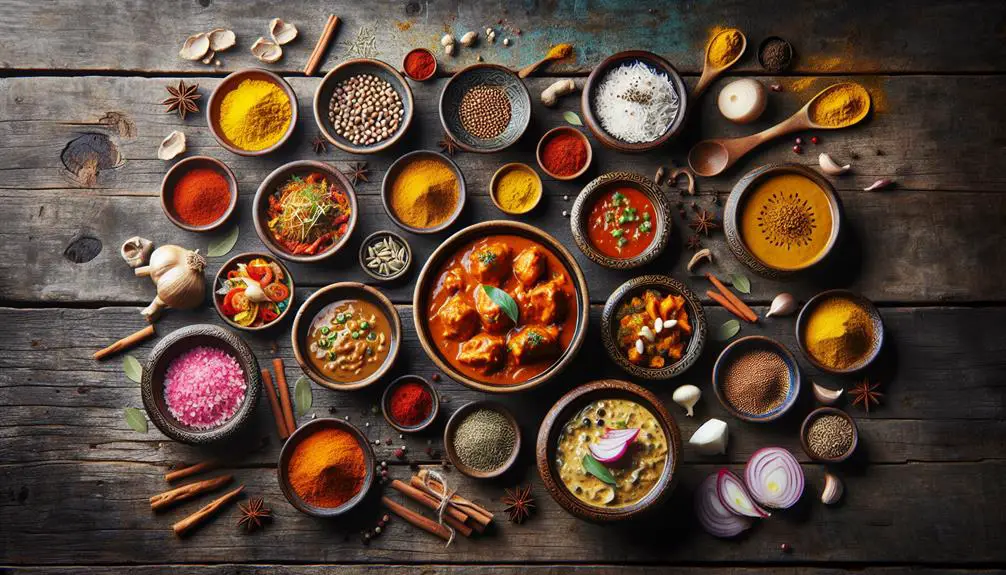

Culinary Techniques

Let’s look at how old cooking methods and new kitchen innovations make this popular dish.
The main part of the dish is the tandoor, an old clay oven important in Indian cooking for a long time. You begin by soaking the chicken in yogurt and Indian spices. This softens the meat and adds strong taste. This soaking step is important for the full flavor of chicken tikka masala.
Next, you put the soaked chicken on skewers and cook it in the tandoor until it has a nice char and is tender.
This cooked chicken becomes the main part, as it’s cooked again in a creamy, spicy curry sauce. The sauce has tomatoes and many spices that go well with the smoky tandoori chicken.
While people still use old methods, new kitchen techniques have brought changes. Cooks might try different soaking times, spice mixes, or ways to cook the chicken to make the recipe their own. No matter the method, the cooking steps for chicken tikka masala make a tasty meal that’s memorable.
Cultural Significance
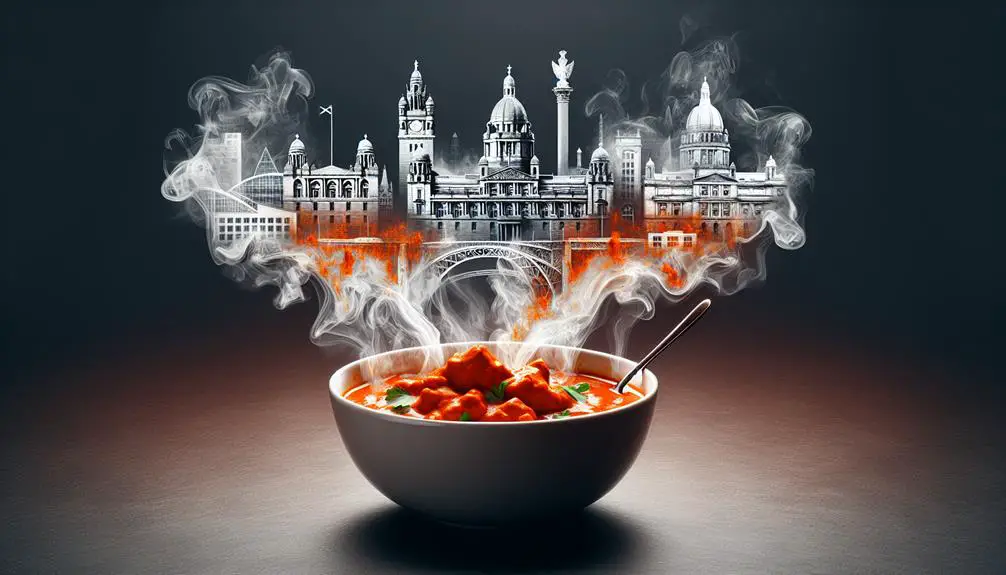
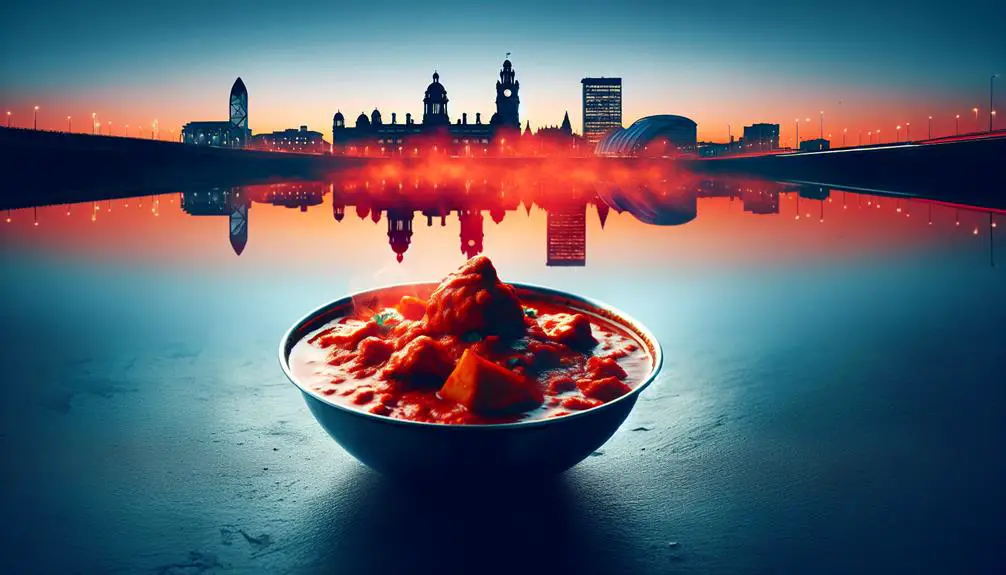
Chicken Tikka Masala is more than just tasty. It’s important in many cultural events and shows how different traditions can come together. This famous food is loved at many festivals and parties. You might see this creamy, spiced curry at a Diwali party in Delhi or at a wedding in Birmingham, making people happy.
When you eat this dish with its deep flavors, you’re not just eating food from a certain place; you’re enjoying a story about cultures mixing and changing.
In the UK, where it’s called a national dish, Chicken Tikka Masala shows how well South Asian people have become part of society there. It shows how the UK has many different cultures living together.
At celebrations, this dish isn’t just about having a good time. It’s a food that helps people feel close to each other, showing how we can all be together and enjoy sharing. So when you enjoy Chicken Tikka Masala, think of it as a sign of different cultures coming together and making something great.
Impact on Global Cuisine

When you taste Chicken Tikka Masala, you see how it has become popular all over the world. It’s a key dish in fusion cuisine. It started as a new take on Indian food and has become famous in many places, mixing with other food cultures.
Chicken Tikka Masala, known for its creamy tomato sauce, used to be a special British food. Now, it shows how food can mix across countries. Cooks around the world make it with their own local things. They keep the original taste but also add something from their own food culture.
You can eat Chicken Tikka Masala in fancy restaurants or at simple street food places. People change it by adding spices from their area or using other meats. These changes show how different cultures come together through food.
Chicken Tikka Masala is everywhere, showing it’s a dish people really like. It’s about enjoying a great meal that connects us.
Controversies and Debates
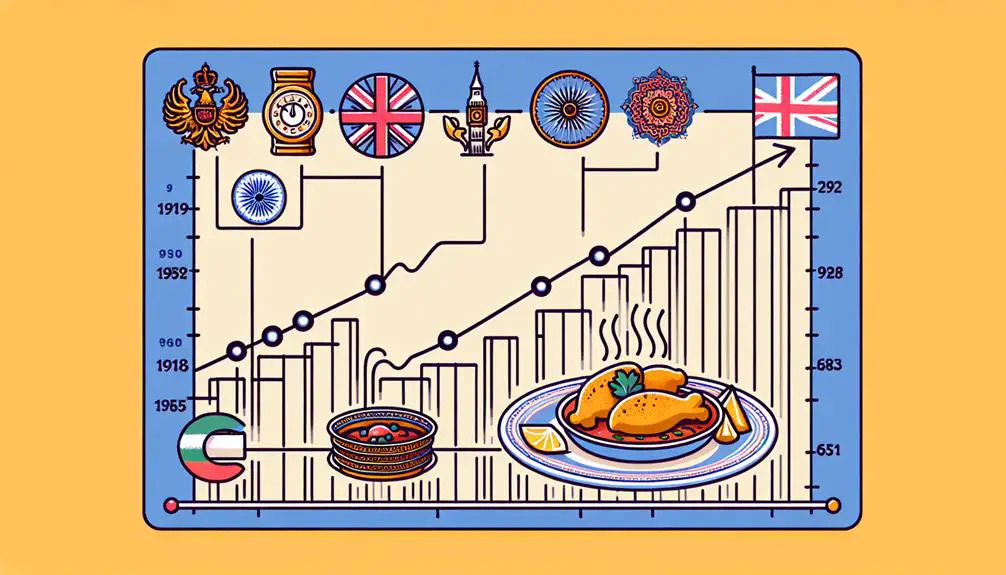
Amid the rich flavors and culinary acclaim, there’s an ongoing debate regarding the authenticity of chicken tikka masala and discussions around cultural appropriation in cuisine.
Some claim chicken tikka masala was invented in the 1970s by a restaurant in Glasgow after a customer requested a saucier version of chicken tikka. However, others argue about its true origin, suggesting it emerged from South Asian kitchens, with food historians weighing in on both sides.
Debates on authenticity are rife. Some folks in the UK sought a protected designation of origin for the dish, akin to Champagne or Parmesan, but this bid was unsuccessful.
Cultural appropriation discussions also surface, questioning whether it’s appropriate for the UK to claim this hybrid dish, given its colonial past and the global influence of Indian cuisine.
You might find these debates intriguing or disheartening, but they underscore the complexities of cultural exchange through food.
Whether you’re a culinary expert or simply love a good curry, understanding these nuances adds depth to every bite you savor. So, next time you tuck into chicken tikka masala, remember there’s more than just spices mingling in that rich, creamy sauce.
Wrapping Up
You’ve journeyed through the flavorful saga of Chicken Tikka Masala, from its mysterious origins to its global table presence.
This dish isn’t just a meal; it’s a testament to culinary fusion and cultural evolution. Whether it emerged from Glasgow’s innovation or Indian tradition, its spice-laden story stirs up as much debate as it does appetite.
So, as you savor its creamy goodness, remember you’re not just tasting spices, but a rich blend of histories that continue to shape our menus and palates.
{ “@context”: “http://schema.org”, “@type”: “Recipe”, “name”: “Chicken Tikka Masala”, “image”: “https://globalfoodorigin.com/wp-content/uploads/2023/12/Chicken_Tikka_Masala_Origin.jpg”, “author”: { “@type”: “Person”, “name”: “Ali Ahmed Aslam or Traditional Indian Chefs” }, “datePublished”: “1970s”, “description”: “Chicken Tikka Masala is a beloved dish featuring marinated and grilled chunks of chicken enveloped in a creamy, spiced tomato sauce, with disputed origins between Scotland and India.”, “recipeYield”: “Serves 4”, “prepTime”: “PT30M”, “cookTime”: “PT1H”, “totalTime”: “PT1H30M”, “recipeIngredient”: [ “Chicken”, “Yogurt”, “Cumin”, “Coriander”, “Garam Masala”, “Tomato Sauce”, “Fenugreek Leaves”, “Paprika”, “Optional: Coconut, Almond, Honey, Cream” ], “recipeInstructions”: [ { “@type”: “HowToStep”, “text”: “Marinate chicken in spices and yogurt.” }, { “@type”: “HowToStep”, “text”: “Grill the marinated chicken until done.” }, { “@type”: “HowToStep”, “text”: “Prepare the creamy tomato sauce with spices.” }, { “@type”: “HowToStep”, “text”: “Combine chicken and sauce, simmer and serve.” } ], “recipeCategory”: “Main Course”, “recipeCuisine”: “Indian, British”, “keywords”: “chicken tikka masala, Indian cuisine, British cuisine, cultural fusion”, “discussionUrl”: “URL_to_a_page_discussing_the_controversies_and_debates”, “aggregateRating”: { “@type”: “AggregateRating”, “ratingValue”: “4.5”, “reviewCount”: “1000” }, “nutrition”: { “@type”: “NutritionInformation”, “calories”: “Calories per serving” }, “articleSection”: [ { “@type”: “ArticleSection”, “name”: “Origin and History”, “articleBody”: “The origins of Chicken Tikka Masala are widely debated, with stories attributing its creation to Glasgow, Scotland, and traditional Indian cooking techniques.” }, { “@type”: “ArticleSection”, “name”: “Cultural Significance”, “articleBody”: “Chicken Tikka Masala has become a symbol of cultural fusion and is celebrated in various cultural events across the globe.” }, { “@type”: “ArticleSection”, “name”: “Controversies and Debates”, “articleBody”: “The dish is at the center of authenticity and cultural appropriation debates, reflecting the complexities of cultural exchange through food.” } ] } { “@context”: “https://schema.org/”, “@type”: “Recipe”, “name”: “Chicken Tikka Masala”, “author”: { “@type”: “Person”, “name”: “Your Name or Website” }, “image”: “image_url”, “description”: “A delicious and creamy Indian dish featuring marinated chicken in a spiced tomato-based sauce.”, “prepTime”: “PT1H”, “cookTime”: “PT45M”, “totalTime”: “PT1H45M”, “recipeYield”: “4 servings”, “recipeCategory”: “Main Course”, “recipeCuisine”: “Indian”, “keywords”: “Chicken Tikka Masala, Indian cuisine, Chicken recipe”, “nutrition”: { “@